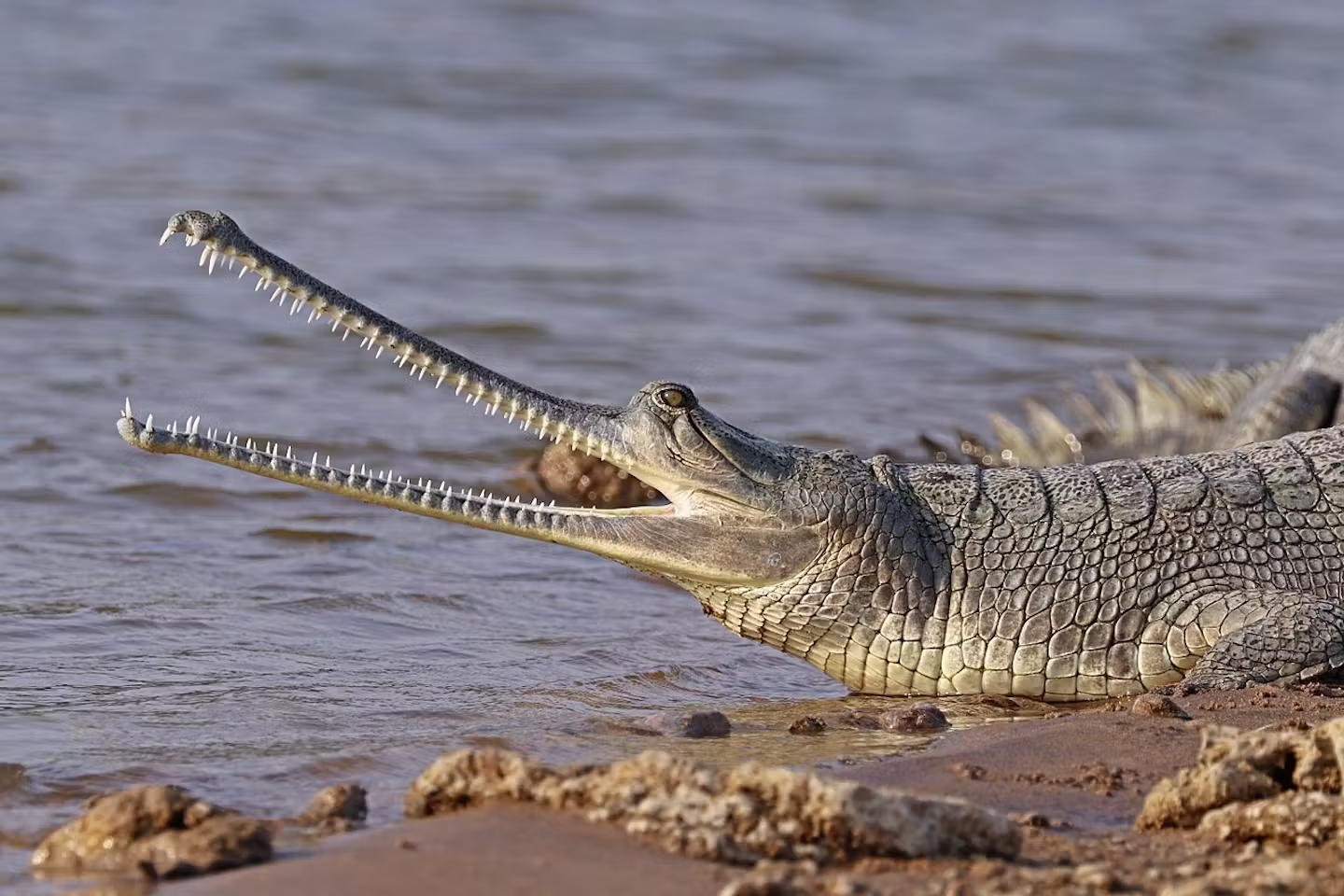Table of Contents
Context: Nearly 174 baby gharials were released into the Gandak river in Bihar to mark the World Crocodile Day. Also Recently, the Madhya Pradesh Chief Minister released 10 gharials into the Chambal River at the National Chambal Gharial Sanctuary in Morena.
About Gharials
Distinctive Features
- Long, narrow snout with interlocking sharp teeth (adapted for catching fish).
- The bulbous snout tip (ghara) in males is used for sound production and courtship displays.
- Webbed feet and weak legs make them excellent swimmers but poor walkers.
- Communal nesting: Many females lay eggs in the same area.
- Parental Care: Unlike crocodiles, gharials don’t carry hatchlings in their mouths but guard them after hatching.
Size and Physical Characteristics
- Males: Grow up to 6 meters (20 feet), weigh 160–250 kg.
- Females: Smaller, growing 6–4.5 meters.
- Teeth: 110+ teeth, designed to grip slippery fish.

- Distribution: Found in India, Nepal and parts of Bangladesh.
- Preferred Habitat: Freshwater rivers with deep pools, sandy banks and slow-moving currents.
- Ecological Role: Primarily fish-eating but also clean up carrion, keeping rivers healthy.
- Cultural Significance: It is depicted as the divine mount of Goddess Ganga in Indian mythology.
Conservation Status
- IUCN: Critically Endangered
- WPA: Schedule-I
Why Is Gharial Conservation Needed?
Past Population Decline
- 1950s-60s: More than an 80% decline in India’s gharial population.
Major Threats
- Historical Threats: Overhunting for skins, trophies, eggs, and traditional medicine.
- Modern Challenges:
- Habitat destruction (dam construction, irrigation canals, embankments).
- Siltation and sand-mining disrupt nesting sites.
- Pollution and river course changes.
| Facts |
|
Distribution of Gharial in India
- Major Protected Areas:
- National Chambal Sanctuary (NCS) (Madhya Pradesh, Rajasthan, Uttar Pradesh).
- Katerniaghat Sanctuary (Uttar Pradesh).
- Son River Sanctuary (Madhya Pradesh).
- Satkosia Gorge Sanctuary (Odisha).
- Madhya Pradesh hosts over 80% of the Gharial population of India & is a champion in Gharial conservation efforts.. It also has the title of “Gharial State”.
| UPSC PYQ |
If you want to see gharials in their natural habitat, which one of the following is the best place to visit ? (2017)
Answer: B |



 Climate Migration in India, Challenges a...
Climate Migration in India, Challenges a...
 India’s Carbon Credit Trading Scheme, ...
India’s Carbon Credit Trading Scheme, ...
 Indian Rhinoceros, Conservation, Threats...
Indian Rhinoceros, Conservation, Threats...





















